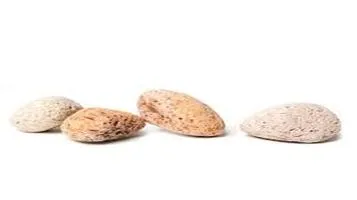The Marvels of the Pumice Stone - A Comprehensive Analysis
Pumice stone is a lightweight, porous volcanic rock formed when lava cools rapidly, trapping gas bubbles within. Its unique texture makes it ideal for various applications, particularly in personal care and household uses. Due to its abrasive qualities, pumice is commonly used as a natural exfoliant for removing dead skin, calluses, and corns, leaving skin smooth and rejuvenated. In addition to skincare, pumice stones are employed in cleaning tasks, effectively removing tough stains from surfaces like tiles and grills. In horticulture, pumice improves soil aeration and drainage, promoting healthier plant growth. Its eco-friendly nature and versatility make pumice stone a popular choice in both beauty and practical applications, offering sustainable solutions without harsh chemicals.

In the realm of personal care and household maintenance, few tools possess the versatility and enduring utility of the pumice stone. This naturally occurring volcanic rock is a staple in many homes, celebrated for its abrasive yet gentle qualities. As a long-time user, I have found the pumice stone to be an indispensable part of my daily routine, and this review aims to delve into its multifaceted benefits, applications, and a few caveats to consider.
The Origin and Composition
Pumice stone is formed from volcanic lava that cools rapidly, trapping gas bubbles within its structure. This process results in a lightweight, porous rock that is both abrasive and gentle. The stone's unique texture makes it highly effective for exfoliating skin, cleaning tough surfaces, and even aiding in plant growth by improving soil aeration.
Personal Care Applications
One of the most common uses of pumice stone is in personal care, particularly for exfoliation. It is especially effective in removing dead skin cells from areas prone to calluses, such as the feet and elbows.
Foot Care: Regular use of a pumice stone can transform rough, calloused feet into smooth, soft ones. After soaking your feet in warm water to soften the skin, gently rubbing the stone in a circular motion can efficiently remove dead skin. The result is not just aesthetically pleasing but also enhances comfort, particularly for those who spend long hours standing.
Elbow and Knee Care: Similarly, the pumice stone works wonders on rough elbows and knees. Its gentle abrasiveness ensures that skin is smoothed without causing irritation or damage.
General Exfoliation: For those seeking a more thorough exfoliation experience, the pumice stone can be used on the body, but it is advisable to use it with caution and not on sensitive areas. The stone helps in sloughing off dead skin cells, revealing fresher, more radiant skin beneath.
Household Applications
Beyond personal care, the pumice stone is a powerhouse in household maintenance. Its abrasive properties make it an excellent tool for tackling stubborn stains and grime.
Cleaning Toilets: One of the most touted uses of pumice stones in the household is for cleaning toilet bowls. It effectively removes hard water stains and mineral deposits without scratching the porcelain.
Removing Stains: Pumice stone can also be used to remove stains from various surfaces, including tile, grout, and even oven racks. Its natural abrasiveness makes it a preferred choice over chemical cleaners, especially for those seeking eco-friendly solutions.
Pet Hair Removal: Another surprising use is for removing pet hair from upholstery and carpets. A quick rub with a pumice stone can gather pet hair into manageable clumps, making it easier to vacuum or pick up.
Gardening Applications
Gardeners have also discovered the benefits of pumice stone. When mixed with soil, its porous nature improves aeration and drainage, benefiting plant roots. This is particularly useful for succulents and cacti, which require well-draining soil to thrive.
Considerations and Caveats
While the pumice stone is indeed versatile and effective, there are some considerations to keep in mind.
Over-Exfoliation: When used for personal care, it is crucial not to over-exfoliate. Excessive use can lead to skin irritation, redness, and even micro-abrasions. It is advisable to limit use to once or twice a week and always follow up with a moisturizer to keep skin hydrated.
Surface Compatibility: When using a pumice stone for cleaning, ensure that the surface is compatible with abrasive materials. While it works wonders on porcelain and tiles, it may scratch softer surfaces like wood and certain metals.
Hygiene: Given that pumice stones are used on the skin and for cleaning, maintaining hygiene is essential. Regularly rinsing the stone and allowing it to dry completely can prevent the growth of bacteria. For personal care, it is recommended to replace the stone every few months.
Quality Matters: Not all pumice stones are created equal. Investing in a high-quality stone can make a significant difference in its effectiveness and longevity. Cheaper alternatives may disintegrate quickly or not provide the same level of abrasion.
Conclusion
In conclusion, the pumice stone is a small yet mighty tool that has rightfully earned its place in both personal care and household maintenance. Its natural origins, combined with its wide range of applications, make it a versatile and eco-friendly choice. While it does come with some caveats, these are easily managed with mindful use and proper maintenance. Whether you are looking to pamper your feet, clean your home, or enhance your garden, the pumice stone stands ready as a reliable ally.






